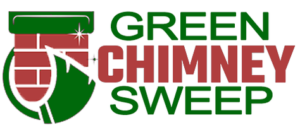A chimney cap might seem like a small and insignificant addition to your home, but it plays a crucial role in maintaining the integrity and functionality of your chimney. Choosing the right chimney cap can prevent numerous potential problems and enhance the efficiency of your heating system. With various types of chimney caps available on the market, it’s essential to understand their functions, benefits, and which one suits your specific needs best.
What Is a Chimney Cap?
A chimney cap is a protective cover installed at the top of a chimney. Its primary function is to prevent rain, debris, animals, and downdrafts from entering the chimney. Chimney caps come in various materials, designs, and sizes, each tailored to address specific issues.
Types of Chimney Caps
Standard Chimney Caps
These are the most basic and commonly used chimney caps. They feature a solid lid and mesh sides.
Material: Typically made of stainless steel, galvanized steel, or copper.
Benefits:
- Prevents rain, debris, and small animals from entering the chimney.
- Helps to prevent downdrafts that can cause smoke to enter the home.
- Affordable and widely available.
Best For: Homeowners looking for a reliable and cost-effective solution to protect their chimneys from common issues.
Draft-Enhancing Chimney Caps
Designed to improve the draft in a chimney, these caps are ideal for homes experiencing issues with chimney performance.
Material: Often made of stainless steel or galvanized steel.
Benefits:
- Enhances the draw of smoke up and out of the chimney.
- Reduces the risk of backdrafts and smoke entering the living space.
- Can improve the efficiency of wood-burning stoves and fireplaces.
Best For: Homes with poor chimney draft or frequent backdraft issues.
Spark Arrestor Chimney Caps
Equipped with fine mesh, these caps prevent sparks and embers from escaping the chimney.
Material: Typically constructed from stainless steel or galvanized steel.
Benefits:
- Reduces the risk of roof fires caused by escaping sparks.
- Provides the same benefits as standard chimney caps in terms of preventing debris and animal entry.
Best For: Homes in wildfire-prone areas or those with wood-burning fireplaces.
Top-Mounted Dampers
These chimney caps function as both a cap and a damper, sealing the chimney flue when not in use.
Material: Commonly made of stainless steel or aluminum.
Benefits:
- Improves energy efficiency by preventing heat loss when the fireplace is not in use.
- Provides a tight seal to keep out rain, animals, and debris.
- Can reduce downdrafts and outside noise.
Best For: Homeowners looking to enhance energy efficiency and have greater control over their chimney’s airflow.
Decorative Chimney Caps
These caps are designed to add aesthetic appeal while still providing basic protective functions.
Material: Often made from copper, stainless steel, or customized materials.
Benefits:
- Enhances the visual appeal of the home.
- Provides standard protection against rain, debris, and animals.
Best For: Homeowners seeking to match their chimney cap with the architectural style of their home.
Custom Chimney Caps
Tailor-made to fit unique chimney shapes or sizes, these caps offer a bespoke solution for non-standard chimneys.
Material: Varies based on customer requirements, but typically includes stainless steel, copper, or galvanized steel.
Benefits:
Perfect fit for any chimney size or shape.
Can incorporate additional features like improved draft or spark arresting capabilities.
Best For: Homes with unusual chimney designs or specific requirements that standard caps cannot meet.
Factors to Consider When Choosing a Chimney Cap
When selecting a chimney cap, consider the following factors to ensure you choose the best option for your home:
- Chimney Size and Shape: Measure your chimney accurately to ensure a proper fit.
- Material: Stainless steel and copper are durable and rust-resistant, while galvanized steel is a more budget-friendly option.
- Climate: Consider weather conditions in your area. For example, homes in wet climates may benefit from caps with better rain protection.
- Functionality Needs: Identify specific issues like draft problems, spark prevention, or animal intrusion to choose a cap that addresses those concerns.
- Aesthetic Preferences: Choose a cap that complements your home’s exterior if appearance is important to you.
- Budget: Prices vary widely, so determine your budget before making a decision.
Installation and Maintenance
Proper installation is crucial for the effectiveness of a chimney cap. It’s recommended to hire a professional chimney sweep or installer to ensure a secure and proper fit. Regular maintenance is also essential. Check the cap periodically for any signs of damage or obstruction and clean the mesh to ensure it doesn’t become clogged with creosote or debris.
Conclusion
A well-chosen chimney cap can significantly enhance the functionality, safety, and longevity of your chimney. By understanding the different types of chimney caps and their specific benefits, you can make an informed decision that best suits your home’s needs. Whether you need a standard cap for basic protection, a draft-enhancing cap for improved chimney performance, or a decorative cap to complement your home’s aesthetic, there is a perfect solution available.
For professional advice and expert installation of your chimney cap, trust the specialists at Green Chimney Sweep. Ensure your chimney is protected and performing optimally with our comprehensive services.
